Colorado water providers have multiple pathways to finance investments in watershed health and wildfire resilience. Explore the resources below to learn about these financing pathways.*
Why Consider Debt for Watershed Projects?
Colorado water providers may find it helpful to finance watershed projects with debt for several reasons. Having upfront capital can help secure needed matching dollars for grants and to get to scale. Paying over time ensures intergenerational equity between current and future ratepayers. And debt allows you to match benefits with costs of your investments with costs over the lifetime of the project. Click on the sections below to learn more.
Secure Grant Matching Dollars & Scale Investments
Colorado water managers typically rely on grants to pay for wildfire resilience and watershed health projects. And while “free” money should be maximized, grants are competitive, opportunistic, and limited. They are not, in other words, a sustainable source of financing for watershed health.
Grants also often require municipalities to contribute local matching funds. Bonds and Clean Water or Drinking Water State Revolving Fund loans can provide municipalities with cash to meet match requirements and/or to pay for larger-scale projects.
Ensure Intergenerational Equity
Unlike pay/go approaches that put the full burden of long-term projects on current ratepayers, debt financing provides intergenerational equity ensuring that future ratepayers share the cost burden along with enjoying the benefits these projects provide. When incurred responsibly and appropriately, debt can provide the upfront capital required for accelerated investments in resilience while keeping rates affordable.
Debt financing for long-term projects also has the advantage of matching investment benefits with costs. Because these projects have long-term benefits, the costs of those projects are more appropriately paid for over the long-term.
Can a Utility Use Municipal Bond Proceeds to Pay for Nature-Based Solutions?
In most cases, Colorado water providers have the necessary legal authority to use bond proceeds to invest in watershed projects. Both state and local statutes and rules regarding debt financing generally and financing for water systems specifically control, and so it is necessary to consult both.
Colorado state law is likely flexible enough to authorize public water providers to finance upstream wildfire interventions with municipal revenue bonds. Check out the “Colorado Bonding Authority Appears to Permit Watershed Project Financing” section below to learn more about the state bonding authority.
Local bonding authority will vary. Check out the “Finding and Unpacking Local Authority to Bond Finance Watershed Projects” section below to learn how to find your community’s local rules and what to look. These sections also include case study examples from Greeley and Denver Water.
Colorado Bonding Authority Appears to Permit Watershed Project Financing
Colorado broadly authorizes public water providers, whether cities, towns, counties, or special metropolitan water districts, to issue revenue bonds to finance water projects. Colorado’s revenue bond statute empowers public water providers to issue bonds for the “improvement, betterment, or extension of any water facilities.”
The term “water facilities” is broadly defined to include improvements used as a part of the collection, treatment, or distribution of water and all extensions, improvements, additions, and alterations to those improvements. Accordingly, nature-based wildfire resilience and watershed health projects likely fall within Colorado’s definition of “water facilities” if they are part of a water provider’s operation of their overall water system and:
- protect water quality, and/or
- reduce risk to water infrastructure ensuring distribution systems function properly, and/or
- can help secure water supplies
Thus, state law appears to permit local water utilities to issue bonds to finance upstream watershed projects.
A related consideration is whether bond proceeds can be used for projects situated on property the utility does not own or control. This is a significant issue since most watershed projects that would benefit Colorado communities is located on land owned by the federal or state governments, or private landowners, rather than the utility. So a key question is:
Does Colorado law require public water providers to have an ownership interest in the property water projects are physically located in order to use bond proceeds to finance these projects?
The likely answer is: No. The focus of the statute is on whether an improvement is used as part of the water system for the relevant beneficial uses (such as domestic and municipal uses). Thus, it appears that Colorado’s state bonding authority is flexible enough to permit utilities to use their bonding authority to finance upstream forest health projects regardless of who owns the property.
Finding and Unpacking Local Authority to Bond Finance Watershed Projects
In addition to state law, local charters and other rules often impact the extent to which local water providers are permitted to use local revenue bonds to pay for watershed projects. These rules may be found in a few different places, such as:
- Local ordinances and municipal codes
- City or county charters
- Prior bond “encumbrances”
- Master bond resolutions
- City or county capital asset policies
- City or county debt policies
For example, local rules governing when and how the City of Greeley’s bond authority are laid out in the City’s Municipal Code and its local bond ordinance. However, Denver Water’s bonding authority is set out in the utility’s Charter and its Debt Management Policy. Check out the Greeley and Denver Water case studies for more details.
Once you’ve identified the relevant local rules regarding the water provider’s authority to issue bonds, the next step is to determine whether those rules permit the agency to bond finance watershed health projects. Two key questions to ask:
- How do the local rules define “water system”? Consider: Does the definition of “water system” include projects that improve, extend, or better the system?
For example, if the local rules define the term “water system” as: “improvements used as a part of the collection, treatment, or distribution of water and all extensions, improvements, additions, and alterations to those improvements” then the utility should be well-positioned to issue bonds for forest projects related to wildfire resilience or watershed health.
By contrast, if the rule language limits the definition of “water system” more narrowly, to built infrastructure such as pipes and treatment plants, for example, then the utility’s flexibility to bond finance nature-based solutions may be more circumscribed.
- Do the local rules require utility ownership as a condition of bond financing? Consider: Does the definition of “water system” specify that improvements to the system need to be owned by the water provider? Or that they need to be located on property owned by the provider?
For example, if the local rules define “water system” simply to include elements that improve, better, or extend the system, the utility likely does not need to have an ownership interest in the property where the nature-based project is located.
By contrast, if the rules define “water system” with language such as: “water facilities now owned or hereafter acquired” by the utility, the water provider will likely need to establish some type of ownership interest in the nature-based project in order to be able to finance the project with bond proceeds.
Important note: This more restrictive language does not necessarily preclude the utility’s ability to bond finance watershed projects although it may complicate it somewhat. The necessary ownership interest can be secured through legal instruments such as contracts, liens, easements, and/or rights-of-way. Outright ownership of the property where the nature-based project is located is likely not required.
Case Study - Denver Water
Denver Water is Colorado’s oldest and largest water utility and provides drinking water to 1.5 million people in the Denver area. The utility directly depends on healthy forests and watersheds. Roughly half of Denver Water’s 2.5 million acre collection system is forested land.
Moderate and severe wildfires in these areas are among the greatest threats to Denver’s raw water supply. In the last 30 years, two of Colorado’s largest wildfires burned over a combined 230 square miles, or 150,000 acres, in the South Platte River watershed. Rains following these storms deposited over a hundred thousand cubic yards of sediment into the utility’s Strontia Springs Reservoir, critically threatening Denver Water infrastructure. In sum, these fires cost Denver Water over $27 million in water quality treatment, sediment and debris removal, and operational challenges. Climate change brings the threat of increased frequency and intensity of wildfires in Colorado.
To mitigate these risks, Denver Water launched its From Forests to Faucets (F2F) Partnership in 2010 and expanded it in 2017. The F2F Partnership is a long-term proactive and adaptive approach to manage source water watersheds. It was implemented as a partnership among Denver Water, the U.S. Forest Service, Colorado State Forest Service, National Resource Conservation Service and the Colorado Forest Restoration Institute. The partnership aims to restore forest health and reduce the risk of high-intensity wildfire by deploying a combination of targeted forest and post-wildfire management practices such as fuels reduction, prescribed fire, and revegetation efforts. Between 2010 and 2023, the program completed over 120,000 acres of forest restoration projects and planted over 1.4 million trees in wildfire burn scars. Since its inception, the program partners have committed over $96 million in forest management projects in critical water supply areas.
To date, Denver Water has used rate revenues to fund its source water protection investments. To explore possible alternative financing approaches that may be available to Denver Water, WaterNow reviewed the utility’s authority to use bond proceeds to pay for investments in source water protection. WaterNow’s initial review indicates it might be possible for Denver Water to bond finance these investments. This long-term financing approach would match the long-term benefits the F2F Partnership provides with the program costs and help keep rate impacts down.
According to WaterNow’s analysis,* Denver Water’s authority to use bond proceeds for water infrastructure investments is governed by Charter of the City and County of Denver. Section 10.1.15 of the Charter authorizes the governing board to issue revenue bonds “for water works purposes.” As the F2F Partnership exemplifies, by helping protect water quality, source water protection investments are projects that could fall within the purposes of Denver Water’s “water works.” Because such investments would provide benefit to the water system, they may be eligible for revenue bond financing.
Further, the Debt Management Policy specifies that the utility’s debt will “primarily be used to fund Capital Improvements.” WaterNow’s assessment is that nature-based watershed health interventions likely meet this requirement.
Generally Accepted Accounting Principles specify that: “assets meeting the definition of capital assets and a government’s capitalization policies…should be accounted for and reported as such.” According to the Government Finance Officers Association guidance: Capital assets are assets that (1) are used in operations and (2) have an initial useful life in excess of one year. Nature-based resilience projects are capital assets; they are used in the operation of Denver Water’s water system and have a useful life of more than one year.
Further, according to the Master Bond Resolution (2023), the utility defines capital improvements as:
the acquisition of land, easements, facilities, water rights and equipment (other than ordinary repairs and replacements), and the construction or reconstruction of improvements, betterments and extensions, for use by or in connection with the System.
WaterNow understands that for Denver Water, “system” means “water works system and treatment plant under control of the board.” The board has control over “… extending and adding to, maintaining, conducting and operating a water works system and plant for all uses and purposes, and everything necessary, pertaining or incidental thereto…” To the extent that watershed management is a key part of Denver Water’s system, and nature-based resilience projects “improve,” “better,” and “extend” that system, WaterNow believes these investments could be characterized as part of the water system.
Given this authority, WaterNow’s analysis suggests that Denver Water should not need to own the property where the source water protection projects are located to use bond proceeds to pay for those investments. Denver Water has taken a similar approach to replacing privately owned lead service lines. The utility has previously applied bond proceeds to the replacement of lead service lines on private property without owning the private line. As explained in the accounting section below, Denver Water “books” these investments in private-side lead service line replacements as “regulated assets” to meet accounting rules. In contrast with, for instance, the City of Greeley’s bonding authority, Denver’s Charter does not specify that the utility own or acquire capital improvements to bond finance them.
This type of bond financing approach to paying for watershed health investments may be new to many water providers. Because of the novelty, water managers’ bond counsel and finance staff may have questions about whether this is an appropriate use of debt proceeds, as well as the legal and accounting implications. Check out the “Engaging with Bond Counsel & Finance Staff” section of the dashboard for some ideas on how to navigate these conversations. This podcast about how Denver Water is financing their lead service line replacements may also be helpful.
*Disclaimer: These materials reflect WaterNow Alliance’s review of Denver Water information and are not offered as or intended to be legal advice, nor do these materials reflect Denver Water’s analysis of the information provided herein. Readers should seek the advice of an attorney when confronted with legal issues. Attorneys should perform an independent evaluation of the issues raised in these materials. By providing these materials WaterNow does not endorse, either expressly or by implication, their accuracy or legality and expressly disclaims any and all liabilities and warranties related to their use.
Case Study - City of Greeley, Colorado
Greeley is situated between the South Platte and the Cache La Poudre Rivers, about 60 miles north of Denver. The City provides drinking water to about 150,000 people, but its watershed and the infrastructure located there is quite vulnerable to wildfire. This vulnerability is why Greeley invests in nature-based watershed projects, including low-tech process-based restoration, aerial mulching, and erosion control. Many of Greeley’s projects are implemented in partnership with the United States Forest Service, Natural Resources Conservation Service, Colorado Water Conservation Board, Coalition for the Poudre River Watershed, and other local partners.
Greeley’s Municipal Code authorizes the issuance of bonds to pay for improvements to the water “system” as approved by ordinances adopted by the City Council. The City’s most recent bond ordinance defines the water system as: “water facilities now owned or hereafter acquired, whether situated within or without the City boundaries, including … improvements, extensions, enlargements, betterments, replacements or additions thereof or thereto.” Capital improvements eligible for bond financing include: “the acquisition of land, easements, water rights, … other acquisition of improvements, betterments and extensions, for use by or in connection with the System….”
Thus, the lynchpin of when a capital improvement can be bond financed is whether it is “owned or acquired” by the city. These improvements can be outside of the city boundary and do not need to be on city owned property; but Greeley does need to acquire some type of ownership interest in the project for it to be considered a capital project that is part of the water system. In other words, under its current bonding rules, Greeley could potentially use bond revenues to pay for upstream watershed projects so long as they are part of the system and the city has acquired some interest in them.
For example, the City has implemented a number of nature-based interventions in the Poudre River Watershed alongside partners including the Coalition for the Poudre River Watershed. Although the majority of the watershed where these projects are located is owned by the United States Forest Service, the National Park Service, the state forest service, and/or private parties, Greeley has several options should it seek to acquire an ownership interest in nature-based watershed health interventions. These options include obtaining easements, leases, or rights-of-way.
For projects located on privately owned property, Greeley has the option to secure an easement from the property owner. This is the approach Milwaukee Metropolitan Sewerage District uses when installing green infrastructure on property it does not own to acquire the needed ownership interest for bond financing purposes. For projects located on federal forest service land, e.g., the Arapaho National Forest and Roosevelt National Forests through which the Poudre River flows, Greeley could apply for a right-of-way as authorized by the Section 1761 of the Federal Land Policy and Management Act. This federal law allows the forest service to issue rights-of-way on public lands for “… facilities and systems for the impoundment, storage, transportation, or distribution of water.” Because nature-based watershed health interventions are facilities and systems for the transportation or distribution of water, installing these practices on federal forest lands may qualify for a right-of-way. This interest in the land may be sufficient for Greeley to demonstrate it has acquired an interest in the installations for purposes of its bonding authority. For state owned lands, Greeley may have a similar option to obtain a right-of-way from the State Land Board to the extent the land is held in trust by Colorado.
Get Technical Assistance
Investing revenue bond proceeds in nature-based watershed health and wildfire mitigation strategies raises unique legal, financial and policy questions. WaterNow’s TiR Program provides up to 300 hours of hands-on technical assistance for water providers seeking support in this area including:
- Tailored research and analysis
- Facilitation of stakeholder meetings to build consensus on financing
- Support developing bond packets, capital improvement plans, city council resolutions, ordinances, or other materials
- Best practices for communicating with customers about these issues.
To find out more about becoming a TiR Pilot Community fill out this short form.
Additional Resources
Check out the additional resources linked below to learn more about how to use revenue bonds to finance nature-based watershed health and wildfire resilience interventions. In depth guidance on navigating questions that arise when investing water infrastructure on property that utilities do not own or control can be found in WaterNow’s Tap into Resilience Toolkit.
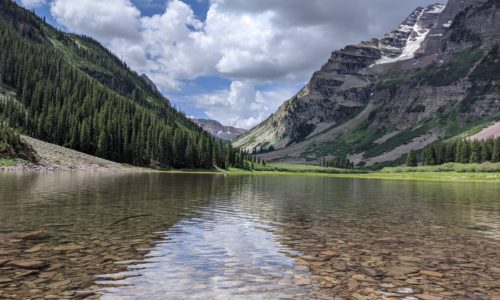
FAQ Scaling Investment in Localized Water Strategies
FAQ addresses some of the questions public utilities face when considering whether and how to shift to municipal bond revenue, or other forms of public debt, to finance localized strategies.

A Water Leaders Guide to Financing Localized Solutions
A water leader's guide to finance distributed infrastructure.
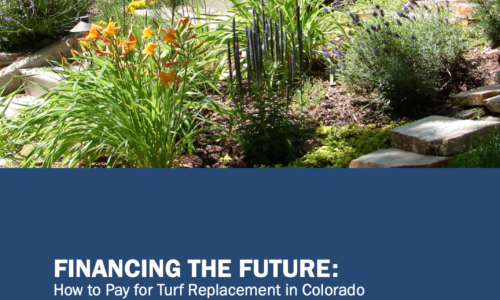
Financing the Future: How to Pay for Turf Replacement
Report examining promising funding and financing pathways available to water providers to scale up turf replacements in Colorado.
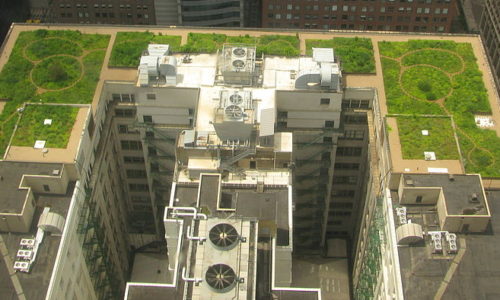
Alternative Ways to Fund Innovation and Water
Report analyzing how successful energy financing structures can be applied to water infrastructure innovations.

Bond Financing Distributed Water Systems
Report exploring how to make better use of current market mechanisms for water utilities to afford implementing localized and green infrastructure solutions at scale.

Go Green: Muni Bond Financing for Distributed Water Solutions
A primer for water leaders on how to debt-finance distributed infrastructure projects and consumer rebates.
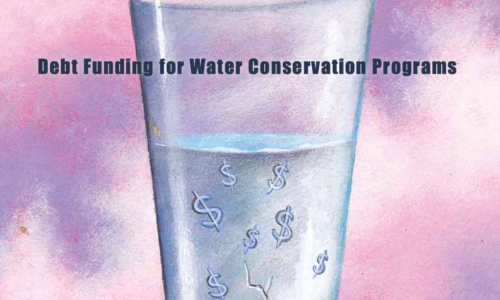
Debt Funding for Water Conservation Programs
Report outlining how water utilities can debt fund water conservation programs that provide substantial benefits to local water utilities and their ratepayers.

Environmental Impact Bonds: How do they work?
Video with Quantified Venture's Eric Letsinger explain how EIBs work

Green Bond Principles
Report outlining voluntary process guidelines for cities and utilities interested issuing green bonds

How to Issue a Green Muni Bond
Playbook for cities interested in issuing green bonds to finance sustainable water investments
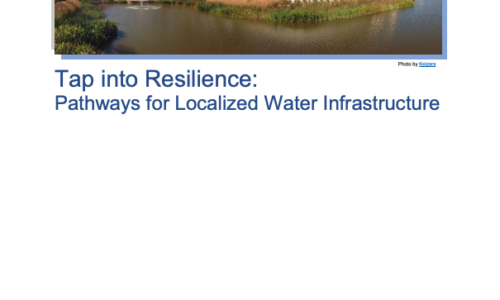
Pathways for Localized Water Infrastructure
Report offering policy pathways and action items for leveraging the considerable and largely overlooked opportunities presented by localized water infrastructure.
Can Water Pollution Control Revolving Fund Loans Finance Nature-Based Solutions?
Colorado’s Water Pollution Control Revolving Fund provides low-cost capital financing for utility initiatives to protect and improve water quality. Since 1981, the Colorado program, established under the federal Clean Water Act, has provided $1.54 billion in financial assistance for clean water projects statewide.
Explore the sections below to find out more about how the WPCRF can finance investments in nature-based wildfire resilience interventions. Click here to learn about applying for a WPCRF loan.
Watershed Projects Align with Colorado’s Clean Water SRF Eligibilities
Eligible Borrowers. All of Colorado’s public water providers—cities, towns, and metropolitan districts—are eligible applicants for the State’s Water Pollution Control Revolving Fund loans. Water providers can pass through funds from their WPCRF loans to watershed groups and other NGOs involved in project implementation. This ability to pass through WPCRF dollars may be particularly helpful given that watershed health projects are often carried out in partnership with NGOs and other stakeholders.
Eligible Projects. Colorado’s WPCRF expressly allows loans to be used for nature-based watershed health and wildfire resilience initiatives. Eligible projects include, for example:
- Source water protection
- Streambank restoration, forest thinning, and forest health projects related to surface water intake structures and source water protection to promote more resilient systems
- Green infrastructure and nature-based approaches that preserve, restore, and stabilize natural features such as forests, meadows, floodplains, wetlands, and receiving waters to allow for wildlife habitat and passage
So long as water providers are making these investments for water quality purposes, these project types are eligible for WPCRF loans.
The types of nature-based interventions Colorado water providers can and are implementing to build resilience to protect water resources meet these eligibilities. These nature-based solutions protect and improve water quality by reducing sedimentation, and build resilience by mitigating risks to water quality caused by wildfire, drought, and other climate change impacts.
Critically, these projects are eligible for WPCRF funding even if they are on property the water providers do not own. These projects can be located on federal and state-owned property as well as privately owned land.
Case Study - Flagstaff, Arizona
In 2010, the Schultz Fire burned more than 15,000 acres of steep, forested slopes of the Coconino National Forest surrounding Flagstaff.
Subsequent rains caused catastrophic flooding from the burn scar, taking the life of a child, destroying neighborhoods, devastating a thriving recreational resource, and impairing local water supply resources. In response, the City spent the next ten years building the Flagstaff Watershed Protection Project.
As part of this effort, Flagstaff uses forest thinning as a key strategy to avoid another catastrophic wildfire event. The City is financing its watershed protection initiatives in part with a $6 million loan from the Water Infrastructure Finance Authority of Arizona, the State’s SRF program. These funds are supporting critical watershed protection activities including 3,285 acres of tree marking, and thinning 4,918 acres, among other components.
Additional financing for Flagstaff’s Watershed Protection Project comes from a $10 million bond authorized by the city’s voting public in 2012. Financing these watershed health interventions alongside other water infrastructure was the first time Flagstaff included wildfire mitigation efforts designed to protect water quality in its capital budget.
Flagstaff demonstrates that watershed health and wildfire mitigation projects are eligible for Clean Water State Revolving Fund loans, and that these projects are capital investments that can be financed alongside more conventional water infrastructure. Nor was the fact that the projects took place on federal forest service property a barrier to municipal investment. The partnerships between the City, the State, and the Coconino National Forest were essential to the project’s success.
Check out the resources below to learn more about Flagstaff’s Watershed Protection Project and how the city is financing the program.

Protecting Source Water with the CWSRF
EPA fact sheet explaining how the CWSRF can be used to finance nature-based source water protection projects.

CWSRF Forest Thinning and Restoration Program
Report featuring Flagstaff's watershed protection program and how it is funded by the CWSRF.

Source Water Protection in Arizona
Presentation on how CWSRF loans can be used for source watershed protection projects.
Get Technical Assistance
WaterNow Alliance provides pro-bono assistance to communities seeking Colorado State Revolving Fund loans for environmentally-sustainable, distributed water infrastructure projects. Please fill out this form if you would like to learn more and speak with WaterNow Alliance staff about your project.
You can also find more information about WaterNow’s technical assistance offerings for the Colorado DWRF and WPCRF programs, and the types of projects we support through this program, visit our website here.
*WaterNow Alliance is an independent non-profit organization supporting communities in applying for these loans. WaterNow is not affiliated with the agencies that administer the State Revolving Fund Loans, Colorado Water Resources and Power Development Authority or Colorado Department of Public Health and Environment.*
Additional Resources
Check out the additional resources linked below to learn more about how to use WPCRF loans to finance nature-based watershed health and wildfire resilience interventions. In depth guidance on navigating questions that arise when investing water infrastructure on property that utilities do not own or control can be found in WaterNow’s Tap into Resilience Toolkit.

CWSRF Forest Thinning and Restoration Program
Report featuring Flagstaff's watershed protection program and how it is funded by the CWSRF.

Protecting Source Water with the CWSRF
EPA fact sheet explaining how the CWSRF can be used to finance nature-based source water protection projects.
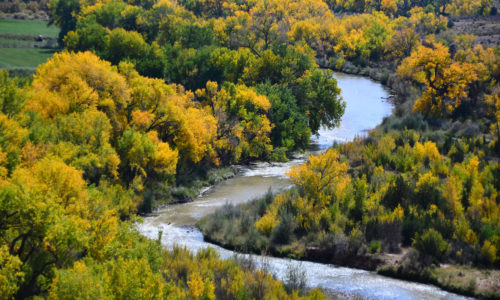
A Handbook for Understanding Natural Capital
From our partners at Earth Economics, check out this guidance manual for understanding relationship between economics and natural systems.

A Water Leaders Guide to Financing Localized Solutions
A water leader's guide to finance distributed infrastructure.

Debt Funding for Water Conservation Programs
Report outlining how water utilities can debt fund water conservation programs that provide substantial benefits to local water utilities and their ratepayers.

FAQ Scaling Investment in Localized Water Strategies
FAQ addresses some of the questions public utilities face when considering whether and how to shift to municipal bond revenue, or other forms of public debt, to finance localized strategies.
Can Drinking Water Revolving Fund Loans Finance Nature-Based Solutions?
Colorado’s Drinking Water Revolving Fund provides low-cost financing for projects designed to protect and improve drinking water quality. Since 1986, the Colorado program, established under the federal Safe Drinking Water Act, has provided $908 million in financial assistance for drinking water projects in the state.
Explore the sections below to find out more about how the DWRF can finance investments in nature-based wildfire resilience interventions. Click here to learn more about applying for a DWRF loan.
Aligning Wildfire Resilience Interventions with DWRF Eligibilities
Eligible Borrowers. All of Colorado’s public drinking water providers—cities, towns, and special districts—are eligible applicants for the State’s Drinking Water Revolving Fund loans. In addition, nonprofits are eligible for DWRF loans. This eligibility for non-profits may be particularly helpful given that watershed health projects are often carried out in partnership with NGOs and other stakeholders.
Eligible Projects. Colorado’s Drinking Water Revolving Fund expressly allows loans to be used for various watershed projects including:
- Source water protection, including nature-based watershed health projects that have a clear nexus to protecting drinking water quality
- Projects that establish a protective zone to address potential pollution as a result of wildfires in burn scar areas
- Source water protection plan development
So long as water providers are making these investments for drinking water quality purposes these nature-based interventions are eligible for DWRF loans.
These solutions protect and improve drinking water quality by reducing sedimentation, and build system resilience by mitigating risks to drinking water supplies caused by wildfire, drought, and other climate change impacts.
Critically, these projects are eligible for Drinking Water SRF funding even if they are on property the water providers do not own. Public water providers can use DWRF loans to finance nature-based resilience projects on federal and state-owned as well as privately owned land.
DWRF borrowers are required to show that the investments are primarily used in connection with the publicly owned water system. Nature-based wildfire resilience and watershed health interventions installed to protect drinking water supplies meet this definition.
Get Technical Assistance
WaterNow Alliance provides pro-bono assistance to communities seeking Colorado State Revolving Fund loans for environmentally-sustainable, distributed water infrastructure projects. Please fill out this form if you would like to learn more and speak with WaterNow Alliance staff about your project.
You can also find more information about WaterNow’s technical assistance offerings for the Colorado DWRF and WPCRF programs, and the types of projects we support through this program, visit our website here.
*WaterNow Alliance is an independent non-profit organization supporting communities in applying for these loans. WaterNow is not affiliated with the agencies that administer the State Revolving Fund Loans, Colorado Water Resources and Power Development Authority or Colorado Department of Public Health and Environment.*
Additional Resources
Check out the additional resources linked below to learn more about how to use DWRF loans to finance nature-based watershed health and wildfire resilience interventions. In depth guidance on navigating questions that arise when investing water infrastructure on property that utilities do not own or control can be found in WaterNow’s Tap into Resilience Toolkit.

Protecting Source Water with Drinking Water SRF
EPA fact sheet explaining how Drinking Water SRF loans can finance source water protection projects.

A Handbook for Understanding Natural Capital
From our partners at Earth Economics, check out this guidance manual for understanding relationship between economics and natural systems.

A Water Leaders Guide to Financing Localized Solutions
A water leader's guide to finance distributed infrastructure.
Navigating “Gift Prohibition” & Accounting Questions Associated with Financing Watershed Projects
The nature of watershed health and wildfire projects—decentralized, distributed across lands not owned by utilities—raises a set of issues around whether and how public funds can be used for these investments, and how to properly account for them.
The sections below provide guidance on two accounting options that comply with Governmental Accounting Standards Board (GASB) rules, and how investments in nature-based interventions meet Colorado’s “gift prohibition” exemption, paving the way for public investments on property owned and under the management of federal and/or state agencies, as well as private property. We have also provided guidance on how water managers can effectively engage with their bond counsel and finance staff on these issues.
GASB 4: Obtaining Ownership Interest or Control through Easements or Contracts
Generally Accepted Accounting Principles (GAAP) allow public entities of all kinds, including water utilities, to borrow to pay for “capital expenditures,” as opposed to annual operating expenses. Capital expenditures typically produce tangible assets that are owned by the utility and last longer than a year, such as treatment facilities, pipes or canals.
GASB Concepts Statement No. 4 (GASB 4) is the conventional accounting standard public utilities use to book debt, and reflects this principle: that there needs to be utility ownership or control over an asset for it to be eligible for debt financing. Under this approach, a utility would need to secure an ownership interest in or control over the nature-based intervention. Note that ownership is not necessarily required, control is sufficient.
Similar to when water provider’s local bond authority specifies that projects that the provider “owns or controls” can be debt financed, for purposes of GASB 4 control can be established through easements or contracts. These easements or contracts provide the water provider with the ability to determine the nature and manner of use of the investment. This meets the GASB 4 requirements for control.

A Water Leaders Guide to Financing Localized Solutions
A water leader's guide to finance distributed infrastructure.

FAQ Scaling Investment in Localized Water Strategies
FAQ addresses some of the questions public utilities face when considering whether and how to shift to municipal bond revenue, or other forms of public debt, to finance localized strategies.

Debt Funding for Water Conservation Programs
Report outlining how water utilities can debt fund water conservation programs that provide substantial benefits to local water utilities and their ratepayers.
GASB2 62: Booking Debt in the Absence of Ownership or Control
GASB created an alternative approach to book debt when public entities, including utilities, want to borrow for long-term investments that do not produce tangible assets. This standard, known as GASB Statement No. 62 (GASB 62), or “Regulated Operations accounting,” is an excellent option for investments in watershed projects because, unlike GASB 4, there is no ownership or control requirement.
Under GASB 62, activities that are part of the utility’s business, such as watershed restoration, can be characterized as “regulatory assets” that the utility can borrow against. The “asset” is not the physical thing being capitalized (e.g., wetland restoration or prescribed fire); it is instead the agency’s promise to repay the debt. GASB 62 is thus a complete alternative to conventional accounting under GASB 4.
GASB 62 is available to any public entity with a governing board legally authorized to:
- Set rates;
- Set those rates at levels to cover the cost of the specific programs to be financed; and
- Commit to setting rates in the future to pay for the cost of these programs.
Virtually all Colorado cities, towns, and metropolitan water districts can meet these criteria.

GASB 62: How Does It Work?
Video with Ed Harrington about "Regulated Operations" and GASB 62 and the potential to unlock an alternative way to finance localized infrastructure solutions

Go Green: Muni Bond Financing for Distributed Water Solutions
A primer for water leaders on how to debt-finance distributed infrastructure projects and consumer rebates.

FAQ Scaling Investment in Localized Water Strategies
FAQ addresses some of the questions public utilities face when considering whether and how to shift to municipal bond revenue, or other forms of public debt, to finance localized strategies.
How to Meet Colorado’s “Gift Prohibition” Exemption
Nearly every state has some form of a constitutional prohibition against “gifts” of public funds for private purposes.
These provisions are distinct from the rules regarding the use of public debt, but can give rise to negative perceptions or concerns about the use of public funds for projects and technologies deployed on private property. Constitutional gift prohibitions are generally not a barrier to investment in nature-based watershed health interventions. (In addition, since most Colorado watershed health and wildfire resilience projects will likely take place on state or federal lands, the State’s gift prohibition would have limited application in any event.)
Gift prohibitions are distinct from the rules regarding the use of public debt, but can give rise to negative perceptions or concerns about the use of public funds for projects and technologies deployed on private property.
As with most states, Colorado allows expenditures that incidentally benefit private interests, as long as they primarily serve and fulfill a public purpose. Article 5, Section 34 of the Colorado Constitution authorizes the expenditure of public funds that incidentally benefit private parties where the public purpose outweighs those incidental private interests.
Accordingly, it appears that Colorado’s gift prohibition does not bar local water providers from using bond proceeds, or other public financing, to pay for watershed health interventions on private property.

WaterNow: State Gift Prohibitions Database
WaterNow's 50-state database of state constitutional gift prohibition laws

Financing the Future: How to Pay for Turf Replacement
Report examining promising funding and financing pathways available to water providers to scale up turf replacements in Colorado.

FAQ Scaling Investment in Localized Water Strategies
FAQ addresses some of the questions public utilities face when considering whether and how to shift to municipal bond revenue, or other forms of public debt, to finance localized strategies.
Engaging with Bond Counsel & Finance Staff
Using municipal bonds or State Revolving Fund loans to finance nature-based wildfire and watershed health interventions will likely be a new concept for many, if not most, water providers in Colorado. Because of the novelty, water managers’ bond counsel and finance staff may have questions about whether this is an appropriate use of debt proceeds, as well as the legal and accounting implications.
To begin to engage in these conversations, water managers will want to be prepared with information establishing that proposed nature-based wildfire resilience and watershed health projects:
- are part of the utility’s water system,
- have a useful life of more than one year, and
- provide demonstratable benefits to ratepayers and the water system.
Water managers can also help to make the business case for watershed interventions by assessing the feasibility of bond financing nature-based resilience projects using the Water Provider Decision-Tool. The tool is designed to help evaluate the threshold factors influencing whether a Colorado water provider can debt finance investments in nature-based wildfire resilience.
